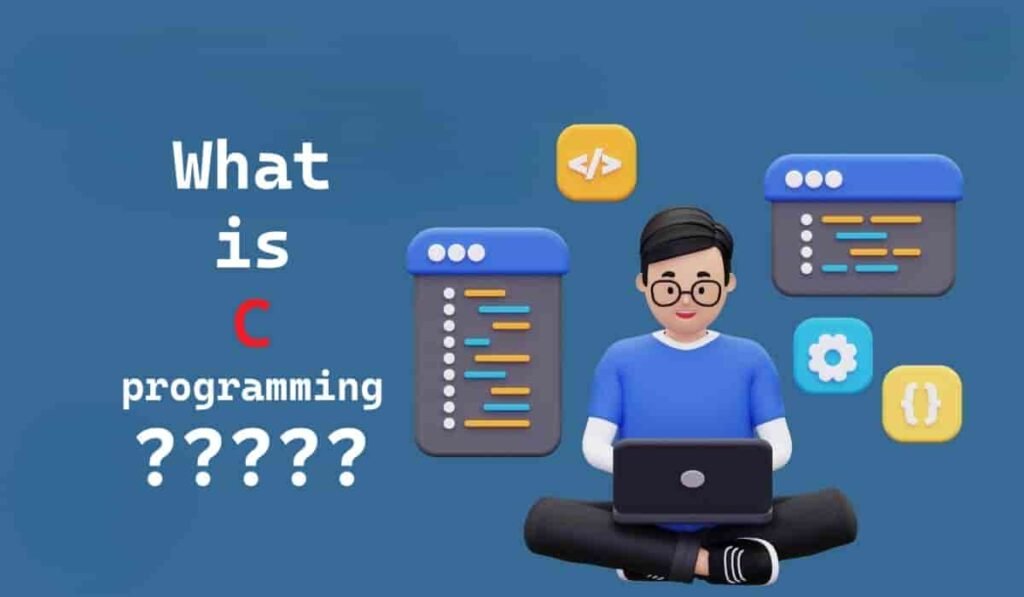Dart, developed by Google, has emerged as a compelling programming language for building modern, high-performance applications across a variety of platforms. While often associated with Flutter, Google’s UI toolkit, Dart’s capabilities extend far beyond mobile app development. This comprehensive guide will delve into the intricacies of Dart, exploring its features, syntax, use cases, and position in the broader programming landscape.
What is Dart?
Dart is a client-optimized, object-oriented, class-defined, garbage-collected programming language with C-style syntax. It’s designed for both client-side and server-side development, offering a balanced blend of developer productivity and execution performance. Key characteristics include:
- Client-Optimized: Dart is specifically designed for creating UI applications with a focus on responsiveness and smooth animations.
- Object-Oriented: It supports object-oriented principles like encapsulation, inheritance, and polymorphism, allowing for modular and maintainable code.
- Class-Defined: Dart uses classes to define blueprints for objects, promoting code reusability and organization.
- Garbage-Collected: Automatic memory management through garbage collection reduces the risk of memory leaks and simplifies development.
- Sound Type System: Dart has a sound type system, meaning the compiler can verify type safety and catch errors early in the development process. This leads to more robust and reliable code.
- Ahead-of-Time (AOT) and Just-in-Time (JIT) Compilation: Dart can be compiled in both AOT and JIT modes. AOT compilation, used in Flutter for production builds, optimizes performance for mobile and desktop applications. JIT compilation, used during development, allows for hot reload and faster iteration cycles.
- Null Safety: Introduced in Dart 2.12, null safety makes nullability explicit in the type system, significantly reducing null pointer exceptions and improving code reliability.
Key Features of Dart
Dart boasts a rich set of features that make it a powerful and attractive language for developers:
- Asynchronous Programming: Dart supports asynchronous programming using
asyncandawaitKeywords, making it easier to handle long-running operations without blocking the main thread. This is crucial for building responsive and performant UI applications. - Isolates: Dart employs isolates, independent execution environments, for concurrency. Isolates communicate through message passing, preventing data races and ensuring thread safety.
- Generics: Dart supports generics, allowing you to write code that can work with different types of data without sacrificing type safety.
- Mixins: Mixins provide a way to reuse code across multiple classes without inheritance. This promotes code reusability and avoids the limitations of single inheritance.
- Streams: Dart has built-in support for streams, which represent a sequence of asynchronous events. Streams are useful for handling data that arrives over time, such as data from sensors or network connections.
- Collection Literals: Dart provides concise syntax for creating lists, sets, and maps using collection literals, making data structure creation more efficient.
- Extension Methods: Extension methods allow you to add new functionality to existing classes without modifying their original source code. This enhances code reusability and maintainability.
- Metadata Annotations: Dart supports metadata annotations, which provide a way to add extra information to your code. This information can be used by tools and libraries to generate code, perform static analysis, or provide other functionality.
- Built-in Libraries: Dart comes with a comprehensive set of built-in libraries for common tasks like I/O, networking, and data manipulation.
- Strong Typing: Dart allows for both static and dynamic typing. While strong static typing is recommended for production, Dart also supports dynamic typing for prototyping and experimentation.
Dart Syntax: A Quick Overview
Dart’s syntax is influenced by C-style languages like Java and JavaScript, making it relatively easy to learn for developers familiar with those languages. Here’s a brief overview:
- Variables: Variables are declared using the
var,final, orconstkeywords.var: Allows the variable to be reassigned to a different value. The type is inferred at compile time.final: The variable can only be assigned a value once. The type is inferred at compile time.const: The variable’s value is known at compile time and cannot be changed.
var name = "John Doe"; // Type inferred as String final age = 30; // Type inferred as int const pi = 3.14159; // Type inferred as double - Data Types: Dart supports various data types, including:
int: Integers.double: Floating-point numbers.String: Text.bool: Boolean values (true or false).List: An ordered collection of objects.Set: Unordered collection of unique objects.Map: Collection of key-value pairs.dynamic: Type that can hold any value.Object: Base class for all Dart objects.void: Represents the absence of a value.
- Functions: Functions are defined using the
returnType functionName(parameters) { ... }syntax.String greet(String name) { return "Hello, $name!"; } - Control Flow: Dart supports standard control flow statements like
if,else,for,while, andswitch.if (age >= 18) { print("Adult"); } else { print("Minor"); } for (int i = 0; i < 10; i++) { print(i); } - Classes: Classes are defined using the
classkeyword.class Person { String name; int age; Person(this.name, this.age); void sayHello() { print("Hello, my name is $name and I am $age years old."); } } - Null Safety Syntax: Dart 2.12 introduced null safety. You can declare a variable as nullable by adding a
?after the type.String? nullableName; // Can be null or a String String nonNullableName = "Jane Doe"; // Cannot be nullTo access properties or call methods on a nullable variable, you can use the null-aware operator?.:String? description; print(description?.length); // Prints null if description is null, otherwise prints the lengthYou can also use the null-assertion operator!to assert that a nullable variable is not null. Use this with caution, as it can throw an exception if the variable is actually null.String? description; String upperCaseDescription = description!.toUpperCase(); // Throws an exception if description is null
Use Cases of Dart
Dart’s versatility makes it suitable for a wide range of applications:
- Mobile App Development (Flutter): Dart is the primary language for Flutter, a popular cross-platform UI toolkit for building natively compiled applications for iOS, Android, web, and desktop from a single codebase. Flutter’s hot reload and hot restart features, powered by Dart’s JIT compilation, significantly accelerate development.
- Web Development: Dart can be used for building web applications, especially with frameworks like AngularDart. While less popular than JavaScript for front-end development, Dart offers advantages in terms of performance and type safety. Dart code can be compiled to JavaScript, making it compatible with web browsers.
- Server-Side Development: Dart can be used for building server-side applications, APIs, and backend services. Frameworks like Aqueduct (now defunct but serves as an example of what’s possible) provide tools for building robust and scalable server-side applications.
- Desktop Application Development: Flutter supports building desktop applications for Windows, macOS, and Linux, making Dart a viable option for creating cross-platform desktop applications.
- Command-Line Tools: Dart can be used to create command-line tools and scripts for automating tasks.
Dart vs. Other Languages
When comparing Dart to other languages, it’s important to consider the specific use case and priorities:
- Dart vs. JavaScript: Dart offers advantages over JavaScript in terms of performance, type safety, and developer productivity, especially for larger and more complex projects. However, JavaScript has a much larger ecosystem and is the de facto standard for web development. Dart solves the performance issues by being able to compile ahead of time.
- Dart vs. Java/Kotlin: Dart shares similarities with Java and Kotlin in terms of object-oriented programming and type safety. However, Dart’s focus on UI development and its integration with Flutter provide a unique value proposition for mobile app development. Java and Kotlin are more mature and established languages in the enterprise backend world.
- Dart vs. Swift/Objective-C: Dart provides a cross-platform solution for mobile app development, whereas Swift and Objective-C are primarily used for iOS development. Dart/Flutter can build iOS apps, Android apps, web apps, and desktop apps from a single codebase, making it a more efficient option for cross-platform development.
Getting Started with Dart
To start using Dart, you need to install the Dart SDK. You can download the SDK from the official Dart website: https://dart.dev/get-dart
After installing the SDK, you can write and run Dart code using a text editor or an IDE like IntelliJ IDEA, VS Code, or Android Studio. VS Code with the Dart extension is a popular choice for Flutter development.
Here’s a simple Dart program:
void main() {
print("Hello, Dart!");
}
To run this program, save it as hello.dart And execute the following command in your terminal:
dart run hello.dart
This will print “Hello, Dart!” to the console.
The Dart Ecosystem
The Dart ecosystem is constantly evolving and growing. Key components include:
- Flutter: A UI toolkit for building cross-platform applications.
- Pub: Dart’s package manager, similar to npm for JavaScript or pip for Python. Pub allows you to easily install and manage dependencies for your Dart projects.
- Dart SDK: Provides the tools and libraries necessary for developing Dart applications.
- Dart Analyzer: A static analysis tool that helps you identify potential errors and improve code quality.
- Dart VM: A virtual machine that executes Dart code.
Conclusion
Dart is a powerful and versatile programming language with a growing ecosystem. Its focus on client-side development, combined with its ability to build cross-platform applications using Flutter, makes it an attractive option for developers looking to create modern, high-performance applications. Whether you’re building mobile apps, web applications, server-side services, or command-line tools, Dart provides a compelling solution with a blend of developer productivity and execution performance. Its ongoing development and adoption suggest it will continue to be a relevant and valuable language for years to come. While it might not be the answer to every programming problem, its specific strengths in UI development and cross-platform capability make it a strong contender for many projects.


